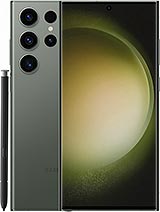Cell Phone Scare: What Do We Really Know About the Health Risks?
Last July, renowned cancer expert Dr. Ronald Herberman sent off a rather alarming note to the 3,000 faculty and staff members at the University of Pittsburgh warning that children should limit their use of cell phones to decrease their risk of cancer. "Although the evidence is still controversial, I am convinced that there are sufficient data to warrant issuing an advisory to share some precautionary advice on cell phone use," wrote Herberman, who heads the University of Pittsburgh Cancer Institute. He also advised adults to choose texting, Bluetooth headsets, or speakerphone options instead of holding a cell phone to the ear.
A few months later, Herberman was standing before the House Subcommittee on Domestic Policy, explaining
why he’d sent up this warning flare. After all, pinning down whether mobile phones -- or the many antenna towers that relay their calls via radiofrequency (RF) signals -- actually cause cancer or other health problems has been a notoriously tricky scientific endeavor. Studies investigating their risks have often been ambiguous and confusing, partly because cell phone technologies are still relatively new, and partly because many cancers take years to develop. Phones’ long-term impact on children, whose brains absorb more RF radiation than those of adults, also remains unclear.
For Herberman, some early study results are troubling enough to warrant caution: "Despite the lack of consistency in outcomes in all the cell phone publications, there are several well-designed studies that suggest that long-term (ten years or more) use of wireless phone devices is associated with a significant increase in risk for glioblastoma (glioma), a very aggressive and fatal brain tumor, and acoustic neuroma, a benign tumor of the auditory nerve that is responsible for our hearing," he testified.
Yet despite worries about their long-term effects, mobile phones are popular because they offer clear-cut short-term health and safety benefits: They can be a lifesaver in emergency situations, and help parents keep tabs on their kids’ whereabouts from a distance. According to the Wireless Association trade group, there are close to 270 million subscribers in the United States -- that’s out of about 300 million Americans.
Cell phone companies have been all too eager to stress their products’ harmlessness. Cell phones emit "non-ionizing radiation," similar to the kind produced by microwave ovens and cordless phones. (X-rays, on the other hand, are a form of ionizing radiation.) These items may heat up when used, but this form of electromagnetic radiation has long been considered unable to change the DNA of an organism -- and DNA breakdown is a possible precursor to cancer.
But cell phones’ explosion in the marketplace, and users’ tendency to wear them close to the body and hold them repeatedly to the same ear, have led scientists to take a second look. The results of international studies have been mixed. Probably the most thorough research so far is the thirteen-country Interphone study overseen by the World Health Organization, which received some funding from the cell phone industry. In some cases, as in the Nordic countries and Britain, cell phone subscribers who used the devices for ten years or more reported higher rates of glioma brain tumors on the side of the head on which they most often used their phones. But scientists relied on people’s recollection of which ear they used for phone conversations and how often they talked on the phone, and human recollection is not always reliable.
On the other end of the spectrum, Germany found no link at all between cell phone use and cancer. Both Israel and Japan, which have large populations of heavy cell phone users, urged more research. The Israeli study suggested there may be an association between heavy mobile phone use and the risk of salivary gland tumors but called for further study. Japanese researchers also said they needed a larger sample size to confirm any link between cell phone use and cancerous tumors.
In 2008 Swedish oncologist Dr. Lennart Hardell, who was one of the first to study the health risks of cordless and mobile phones, tried to clarify these mixed results by doing a detailed analysis of the Interphone data, as well as data from several other contemporary studies. Because some studies included data on people who used cell phones infrequently, or who had not used them for many years, Hardell suspected that their cancer risk findings were too low. When Hardell focused on only the studies that evaluated decade-long exposure, he noticed that all of them showed an increased risk of glioma on the side of the head used for telephone calls.
Other concerns have been raised about how cell phones affect the ambient environment in neighborhoods where antenna towers -- also known as base stations -- are located. To offer the most affordable and complete coverage, cell phone carriers are placing these base stations nearly everywhere: in schools, churches, apartment complexes and businesses, subjecting nearby residents to whole-body radiofrequency exposure. In some cases, people living or working near these structures have complained of health problems like insomnia, headaches, and dizziness; studies have attempted to link antenna towers with everything from memory problems to heightened body temperatures, but with little consensus.
Ultimately, it’s even harder for researchers to assess the health risks of cell towers than of the phones themselves. For one thing, holding a cell phone close to the body has more impact than standing near a cell tower. Additionally, because symptoms like headaches are so general and hard to pin to one cause, it’s difficult to prove correlation. So far, authorities like the World Health Organization have concluded that "there is no convincing scientific evidence that the weak RF signals from base stations and wireless networks cause adverse health effects."
Nevertheless, concerned people like environmental consultant Cindy Sage, owner of the Montecito-based firm Sage Associates, think that further federally funded studies are needed. "Although scientific studies as yet have not been able to confirm a cause-and-effect relationship, these complaints are widespread and the cause of significant public concern in some countries where wireless technologies are fairly mature and widely distributed," Sage wrote in a report presented to the BioInitiative Working Group, an independent group of international scientists, researchers, and public health policy professionals in the area of electromagnetic fields. "For example, the roll-out of the new third-generation wireless phones and related community-wide antenna RF emissions in the Netherlands caused almost immediate public complaints of illness." (Sage is equally leery of the phones themselves: "I have one for emergencies, but I don’t use it," she says. "I think this is an experiment on the human race I don’t want to participate in.")
The ambiguities surrounding the health effects of base stations bring the debate to a local level. Take the High Street area of Point Richmond, where a T-Mobile antenna installation has been the focus of litigation, neighborhood infighting, and reports of medical problems.
At first glance, the rooftop base station is easy to miss despite its size and breadth of coverage. The antennas
are enclosed in an inoffensive orange box, which up close has no lid and measures six feet tall and seven and a half feet wide. Inside the enclosure are six thick pipes -- the antennas -- with smaller, more intricate boxes attached to them. According to Rod De La Rosa, senior manager of external affairs at T-Mobile, a typical installation can handle a hundred voice and data users simultaneously. "Our increasingly mobile society requires an increasing number of mobile services," he says. "People rely on their mobile phones for much more than just talking -- they listen to music, send and receive emails and text messages, swap photos, and even contact emergency services."
But despite the subtlety of the orange box, some neighbors say its effects have been all too apparent. Freelance writer Robin Carpenter and her husband Andrew Olmsted own a three-story Victorian house on High Street. In 2007, a few months after the base station was installed on an apartment complex fifty feet from their bedroom window, the two say they began to feel ill. "I had nosebleeds and skin rashes," says Carpenter. "The visual disturbances and blinding headaches were the worst. I wasn’t sleeping and was feeling depressed."
Eventually Carpenter and Olmsted say the toll on their health became too much. They relocated to west Marin, paying rent there and the mortgage on their Richmond house. In west Marin, where, she says, "there is no cell phone reception," Carpenter started sleeping through the night again. The nosebleeds, rashes, and other symptoms subsided. Then she returned to Point Richmond to check on the house. "When we came back, within a week, the headaches were coming back," she says.
Another High Street resident who asked not to be named for fear it would interfere with pending litigation said that within two weeks of the installation she started having headaches, muscle aches, and nosebleeds. She had to rearrange her furniture and move her home office away from the antennas. She wants to move but has run into difficulty selling her home. "The subject of moving has been a discussion for a year," she says. "But we are financially trapped. Also, we have had real estate agents [make] it clear that the cell tower is a big issue and must be disclosed and would have a negative impact on the sale price of the house."
The base station garnered plenty of neighborhood opposition before it was installed at 260 Water Street, says the building’s manager Anthony Tripp. Tripp, along with his wife Sandy, lives in the apartment directly beneath the antennas. "I couldn’t find one person [who favored the installation], other than our landlord and his wife," Tripp says. "There wasn’t anyone. The general reaction was quite negative. It [the base station] magically appeared there without anyone’s foreknowledge." Tripp says he and his wife have not experienced any health symptoms related to the antennas, but they are concerned about possible long-term effects and the lack of community input regarding its presence.
Disgruntled neighbors circulated rumors, including one that the apartment building’s owners, Gerald and Janice Feagley, were receiving $25,000 a month for renting installation space to T-Mobile. (The couple’s attorney, Kathleen McKinley, says that figure is more like $2,000 a month.) On June 2, 2008, Carpenter and Olmsted, along with ten other named residents and their organization, Richmond Residents for Responsible Antenna Placement and Planning (www.rap4richmond.org), filed a lawsuit against T-Mobile, the city of Richmond, and the Feagleys. The plaintiffs accused the city of failing to provide public notice and conduct public environmental reviews of the antennas, violating residents’ due process rights. They also claimed that T-Mobile’s tower "generates far more power -- and poses a correspondingly greater threat to public health and safety -- than most other cell towers."
But federal law makes it hard for neighbors to protest. The monumental Telecommunications Act of 1996, passed during the Clinton administration to promote competition in the industry, prohibits residents from blocking the installation of cell phone antennas on public or owner-approved land, including schools, churches, and apartment complexes, for health reasons. Legally, residents can block the installations if they can prove electromagnetic fields exceed limits imposed by the Federal Communications Commission or the structures violate local zoning ordinances, but they cannot fight the cell phone service providers for fear their products
will give them cancer.
T-Mobile says it is very cautious about adhering to federal limits. "Typically we have an independent third party engineer check our equipment against prevailing standards with the FCC," says De La Rosa. "Typically our exposure is less than one percent of the maximum exposure allowed by the FCC." Kathleen McKinley, the Feagleys’ attorney, says the Water Street installation meets federal exposure and health standards. Those who feel the government’s guidelines are too relaxed "need to take the issue up with the federal government rather than attack private individuals that haven’t done anything illegal," she says.
The local court system agreed with her: on September 10, 2008, the residents’ lawsuit was dismissed by Judge Barbara Zuniga of the Contra Costa County court system on the grounds that she had no jurisdiction over a federal issue like the Telecommunications Act. She declined to hear the case again in November after Carpenter’s
attorney filed a motion for reconsideration.
The failed lawsuit has left the neighborhood swirling with bad feelings. The Tripps say people have moved out of a nearby apartment complex as well as refused to move into the neighborhood because of the installation. Still, the Tripps are offended at the vitriol directed at the Feagleys. "The other people were too aggressive," Sandy Tripp says of their most vocal neighbors. "They were spreading nasty rumors. They weren’t going about it the right way."
For their part, Carpenter and Olmsted feel they were personally attacked for speaking out against the antenna installation. "‘You are the ones that devalue the property by speaking up!’" she recalled neighbors saying. "It’s an interesting mindset."
Now the couple is mulling the next move in light of dwindling alternatives and resources. They are trying to negotiate with their mortgage lender to see if they can freeze their house payments -- or even receive help with legal bills -- until the dispute over the antenna is resolved. The other option is a short sell. "We will probably end up losing our home and not have property in Richmond," Carpenter tearfully says. "But we are fighting this battle for Richmond. We feel this is important. If we lose our house, we know we helped others keep theirs safe."
The couple, along with Richmond city councilmembers and engineers, has also drafted a 27-page ordinance they hope will become a model for cities and towns across the country. In it, the group asks that future antennas be placed on sites at least 1,000 feet from "residential uses, schools, daycare centers, hospitals, and mixed-use areas." It stipulates how the equipment is to be installed and calls for regular radiofrequency readings by an independent contractor paid for by the wireless service provider. (If approved, the ordinance could be finalized this spring.)
One more consolation prize: for their work with RAP, Carpenter and Olmsted received a citation for public service from Richmond Mayor Gayle McLaughlin on January 27. "We’ve been getting calls from around the country," about antenna issues, Carpenter says. "We try to be a good resource so people don’t have to spend as much time as we did trying to figure this out."
Given the confusing studies and the fact that cell phones are a part of modern life, what is a concerned person to do? One could stop using cell phones -- but almost no one interviewed for this article was willing to do it. After all, cell phones can be awfully handy if you’re ever sick, hurt, or lost. One local mom, Melinda Reilly of Orinda, reacted cautiously to Dr. Herberman’s warning about children’s cancer risk. "I got myself, my husband, and daughter ear buds," she said. She’s relieved that her seventeen-year-old daughter uses the phone largely for text messaging, which according to Herberman, is the safer way to go.
But others say cell phones are a small risk in an otherwise risky world. Elaine Lindelef, a partner at a computer-consulting firm in Mendocino County, says she is not worried about her family’s cell phone use. "If you walk down a busy street every day and breathe in the fumes of all the cars, that is more of a carcinogenic exposure than talking on the phone," she figures.
McKinley, the Feagleys’ lawyer, expressed a similar sentiment about the towers themselves: "People are exposed to all sorts of chemicals short-term and long-term. Living near 580 and the bridge and exposure to automobile exhaust is probably more damaging to them than living near a cell antenna." As T-Mobile’s De La Rosa points out, even if worried people just keep a cell phone on hand for emergencies, it still validates the need for antennas everywhere. "People expect coverage where they live, work, and play, and to be able to provide that level of coverage, these antenna facilities are necessary," he says.
For those looking to reduce their electromagnetic radiation risk, Herberman recommends not carrying the cell phone on the body, unless its keypad is positioned towards you so the phone’s electromagnetic fields "move away from you rather than through you." He also recommends using speakerphone or a wireless headset to avoid placing the phone on your ear. If you must put the phone to your head, make sure to switch ears regularly and keep the conversation as short as possible. And try to avoid using the phone when there is bad reception such as in a moving train or car, Herberman urges. While it’s still too early to know for sure how cell phones might impact human health, anyone who’s worried may want to consider this a bug in their ear.
Research & Studies
Making Information and Communication Technology (ICT) a central part of efforts to decrease CO₂ (Carbon Dioxide) output has the potential to reduce..
Research & Studies
New research from Ericsson (NASDAQ:ERIC) has suggested that mobile penetration is outpacing births rates across the Middle East. According to the..
Research & Studies
Thanks to mobile broadband, an ever-increasing number of people and devices are connected. This phenomenon provides more opportunities for operators,..

 Vodafone Oman
Vodafone Oman Emirates Telecom
Emirates Telecom  Ooredoo Om
Ooredoo Om Ooredoo Qa
Ooredoo Qa stc Bahrain
stc Bahrain Orange Egypt
Orange Egypt Mobily
Mobily Zain Jo
Zain Jo omantel
omantel STC
STC Emirates Du
Emirates Du Asiacell
Asiacell Etisalat Egypt
Etisalat Egypt  Telecom Egypt
Telecom Egypt jawwal
jawwal Orange Jo
Orange Jo Umniah
Umniah Zain Sa
Zain Sa Bahrain Batelco
Bahrain Batelco Zain Bh
Zain Bh Wataniya palestine
Wataniya palestine Kuwait Viva
Kuwait Viva  Zain Kw
Zain Kw Vodafone Qa
Vodafone Qa MTN Syria
MTN Syria Syriatel
Syriatel Sabafon
Sabafon Zain Iq
Zain Iq MTN Yemen
MTN Yemen Ooredoo Kw
Ooredoo Kw Vodafone Egypt
Vodafone Egypt  Samatel
Samatel Huawei
Huawei Samsung
Samsung MOTOROLA
MOTOROLA Alcatel
Alcatel Lenovo
Lenovo LG
LG Nokia
Nokia Sony Ericsson
Sony Ericsson HTC
HTC BlackBerry
BlackBerry Siemens
Siemens Acer
Acer Sony
Sony Asus
Asus VK
VK APPLE
APPLE BenQ-Siemens
BenQ-Siemens Sagem
Sagem Eten
Eten HP
HP Panasonic
Panasonic Amoi
Amoi Toshiba
Toshiba Sharp
Sharp Sonim
Sonim Bird
Bird Mitac
Mitac Philips
Philips Vertu
Vertu Pantech
Pantech Micromax
Micromax Maxon
Maxon Haier
Haier I-mate
I-mate Gigabyte
Gigabyte I-mobile
I-mobile Kyocera
Kyocera BenQ
BenQ Microsoft
Microsoft Telit
Telit Connect
Connect Sendo
Sendo SEWON
SEWON Mitsubishi
Mitsubishi DELL
DELL NEC
NEC Thuraya
Thuraya Neonode
Neonode Qtek
Qtek Be
Be Bosch
Bosch Palm
Palm MWG
MWG XCute
XCute Fujitsu Siemens
Fujitsu Siemens WND
WND INQ
INQ O2
O2 Innostream
Innostream Benefon
Benefon Google
Google


















